Barefoot Believers - Experience Buddhist Myanmar
Forewords
When you remove your shoes and socks,
and walk among the pagodas.
sometimes it feels cold,
and sometimes it feels hot,
in the blink of an eye,
you realize how minuscule you are,
under this glorious skin,
is nothing but a grain of dust in this universe.
There is no
rich or poor in Myanmar,
only faith.
First Impression of Myanmar
My plane went through thick clouds and landed in Mandalay International Airport. Finally, I have arrived in the country I had been wanting to visit for so long. Just like how I imagined, Myanmar is not like any country I’ve been to. It is known as “the Kingdom of Buddhism”. The religion has been here for more than 2,500 years ever since Hinayana was introduced from India. Local people believe in Buddhism and advocate to build pagodas, hence the country has earned a nickname “the Kingdom of pagodas”. Burmese are kind, friendly, they smile a lot and they seem just want to live in peace. As a tourist in Myanmar, the only thing to watch out for is that shoes and socks must be removed when you enter a temple, you must be barefoot.
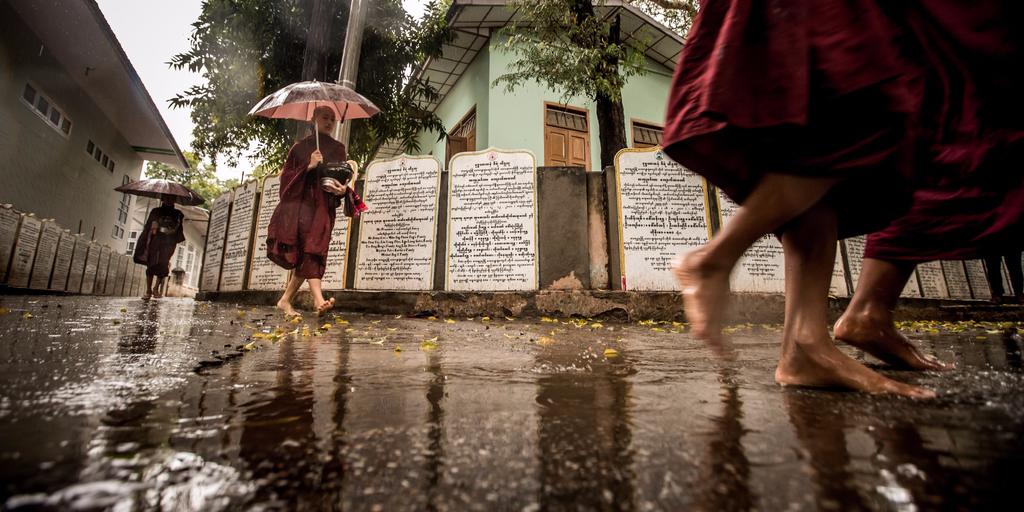
Despite the drizzling rain, young monks were still on their way to ask for alms, barefoot.

Happiness could be so simple. A football match makes a perfect afternoon.
Once Upon A Time There was a Mountain, and There was a Temple on It
At an altitude of 236 meters, Mandalay Hill isn’t very tall, but its significance among Burmese people is supreme, it is a holy place. Sakyamuni, known as the founder of Buddhism, passed by the mountain when he was promoting his dharma, and he pointed at the massive land under the hill and predicted the prosperity 2,400 years later, and Mandalay is the city he predicted.
There is a temple at the top of Mandalay Hill. But there is one thing you have to do before entering, and that is removing your shoes. Drought leads to rain. This rain has lasted for four days even though it was the dry season. We were at a loose end when we noticed the muddy road and turbid water. So we tried to comfort ourselves, as the old saying goes, take things as they come. We plucked up, removed shoes and socks, and stood on the cold and wet floor barefoot. Our toes were curled and we walked carefully toward the hilltop. There is a saying that when there is nothing to lose, there is nothing to fear, and we started to get used to the climb. You’d realize that you become closer to this world when you have nothing on your feet.
Even though the drizzling rain ruined our plan to look down on the city of Mandalay from the hilltop, we were still shocked by the sincerity of those believers, it was the first time that I really felt how supreme Buddhism was in Myanmar. It seems that Burmese people have little to demand about life, chanting sutras and worshiping Buddha make the most important part of their life.
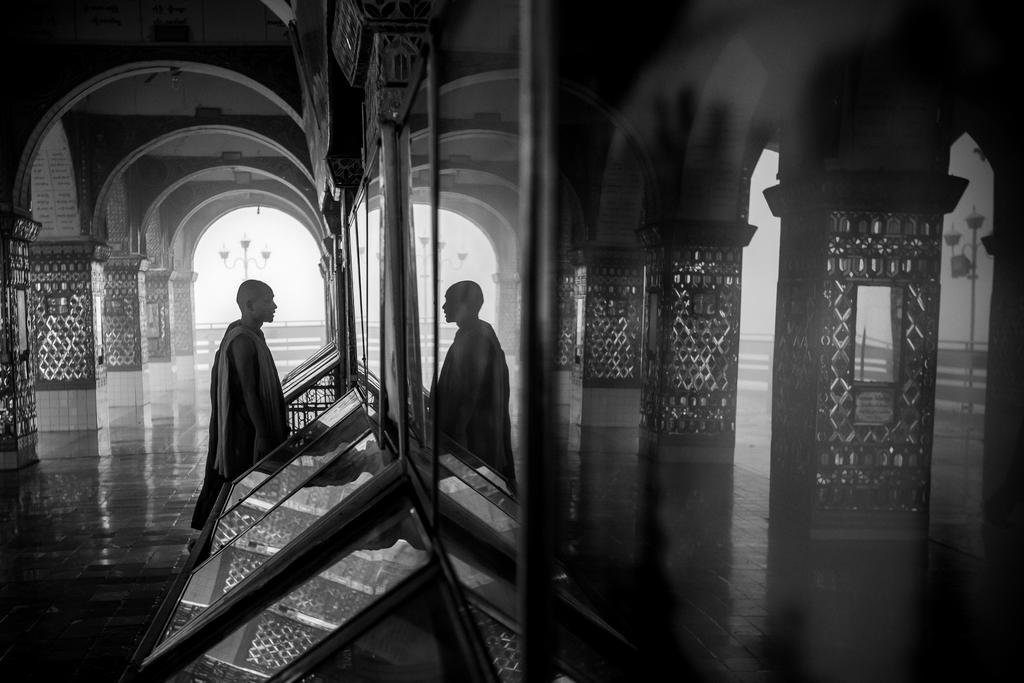
On this gloomy day, monks were guiding visitors in the hilltop temple
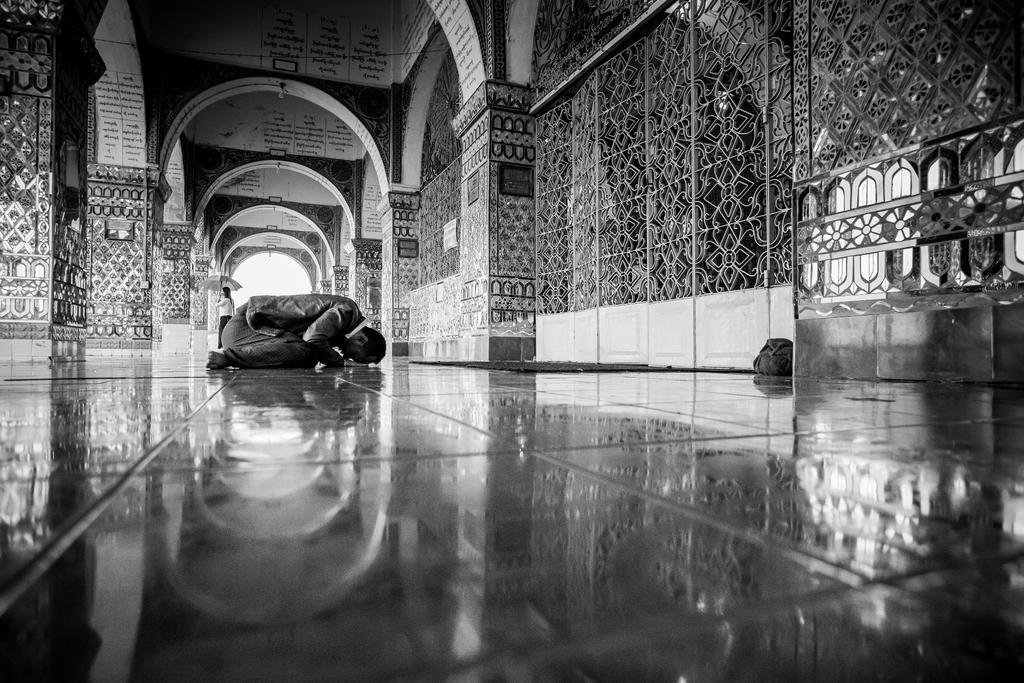
Almost every Burmese is Buddhist and worship is a part of life
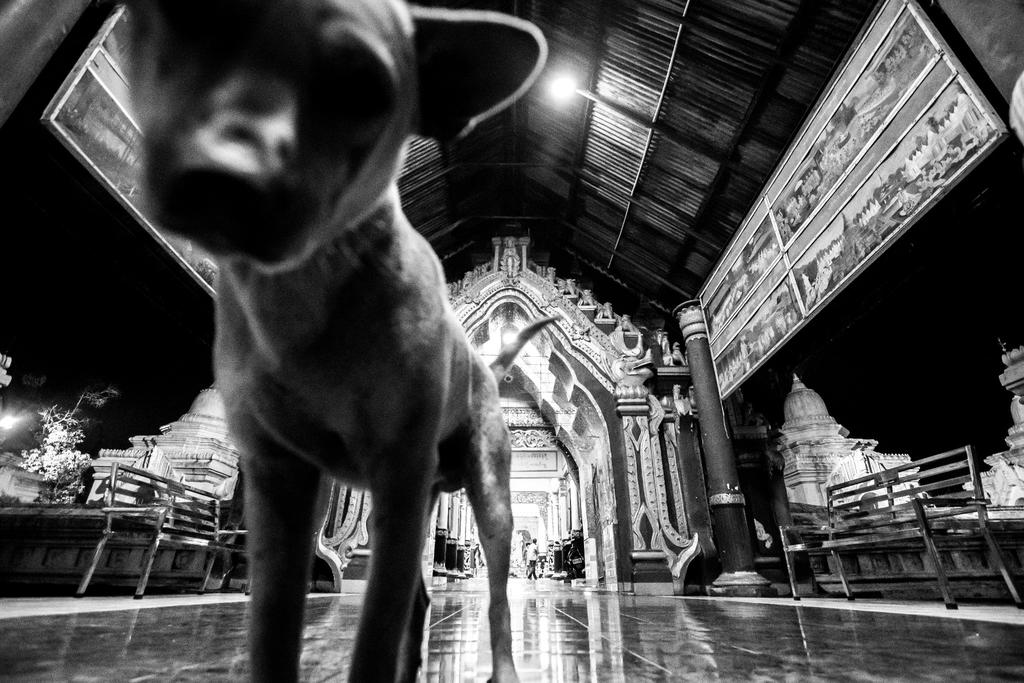
It seems that there are always some dogs in front of every temple in Myanmar, expecting offerings of food from visitors.
Life Stories on U Bein Bridge
U Bein Bridge rooted in my heart because of a photo of it taken during sunset. We were on a boat on Taungthaman Lake at dusk, and U Bein Bridge was set off by the afterglow. The ripples on the lake shattered the once peaceful reflection. Only when seeing in person, you would understand how beautiful sunset at U Bein Bridge really is.
U Bein Bridge is 1,200 meters long, and it is believed to be the longest teakwood bridge in the world. The bridge body was made of teakwood completely, a very precious raw material in Myanmar, and there is not one single iron nail found in the joints of the bridge, but all pieces are connected by tenons. The bridge is still solid after 150 years. U Bein Bridge remains an important part of life for locals. There were many people coming and going on the bridge during sunset. There were students, loving couples, carefree monks, and tourists who were taking selfies. All of them give the bridge a breath of life.
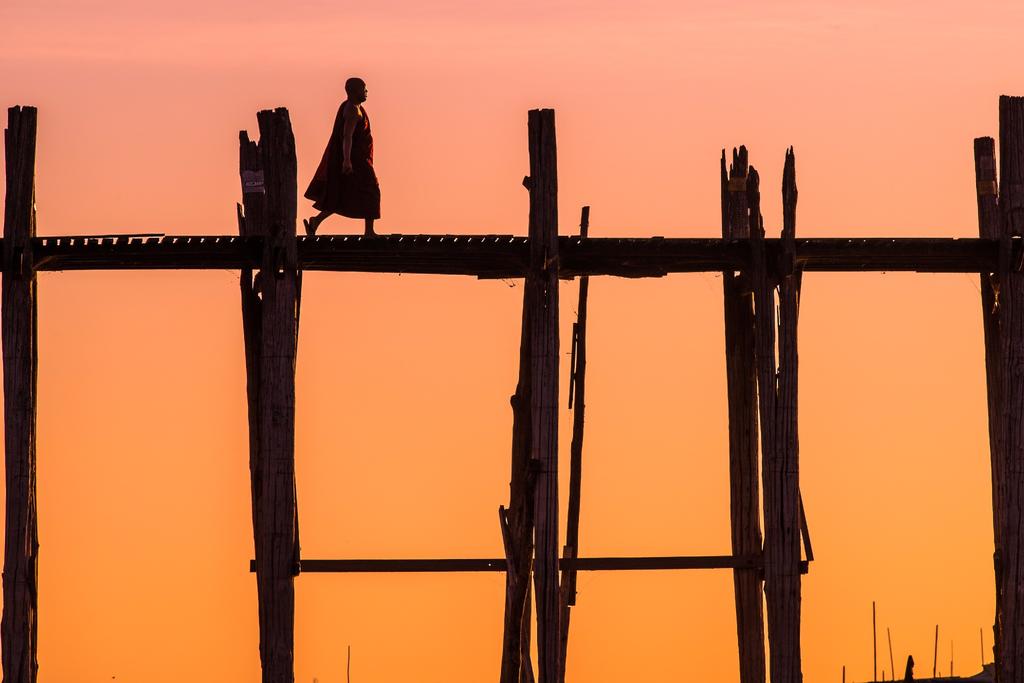
Monks were wandering on U Bein Bridge. Look how carefree they were as if they have seen it all in life.
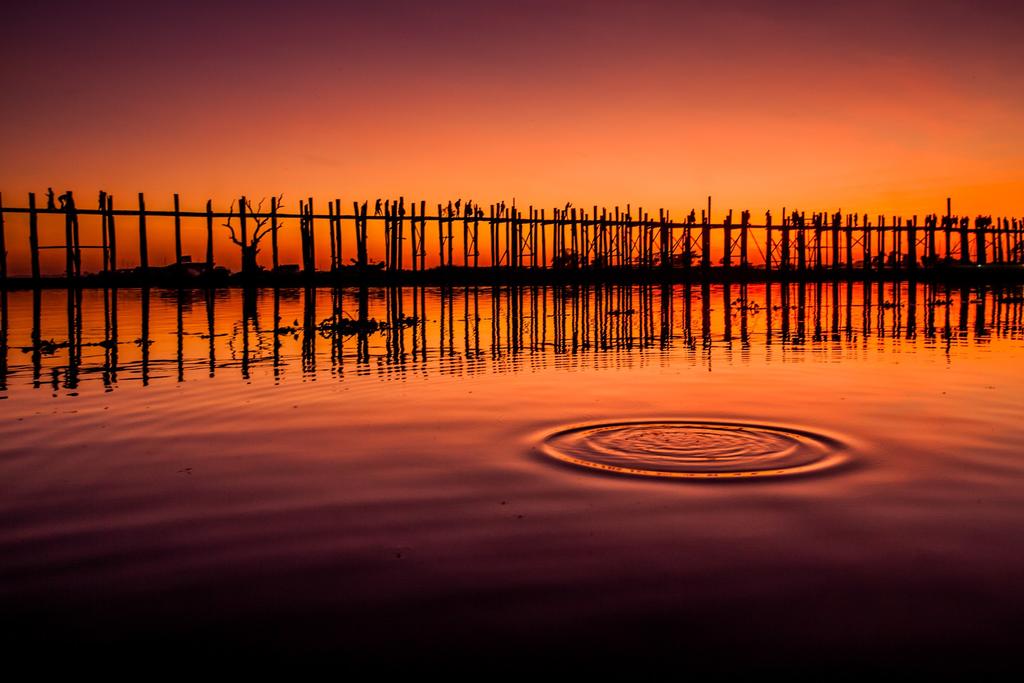
U Bein Bridge is like a magical bridge that connects the heaven and earth.

The beauty of U Bein Bridge is not just about how pretty the bridge is at sunset, but also the life stories on it.
Day and Night on the Bagan Plains
We climbed to the top of the thousand-year-old pagoda barefoot at night, just to wait for the first sunlight to light up the pagodas on the Bagan plains, more than two thousand of them. We waited from nightfall to moonrise, just so that not a single glorious moment is missed.
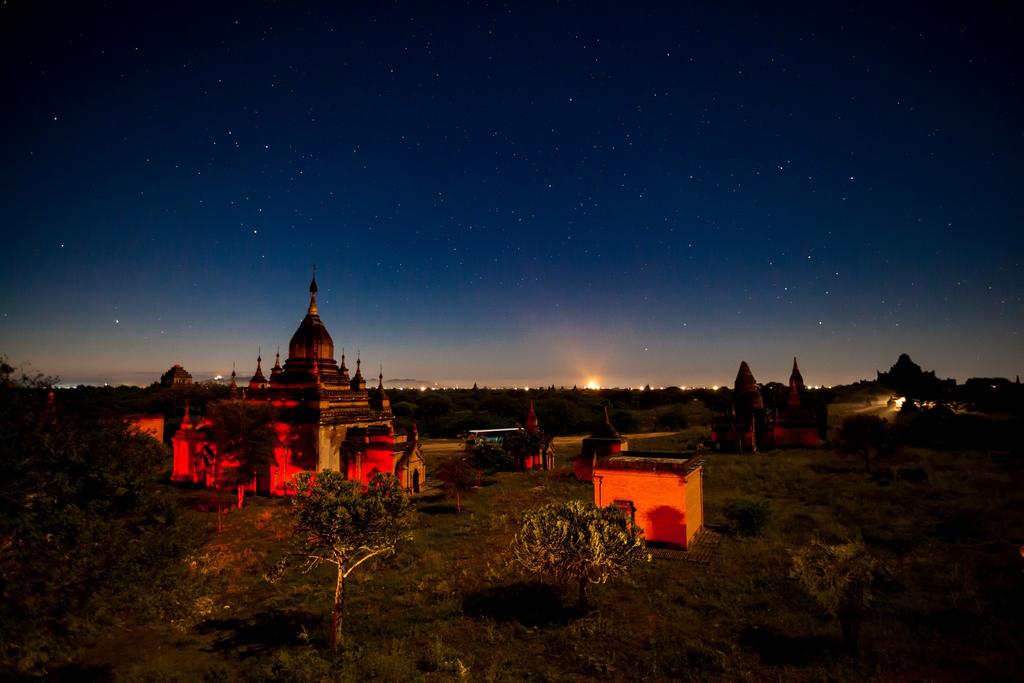
A little bit of tail light from a car lit up the pagodas under the starry sky.

As pagodas were awakened by the rising sun, it was a new day on the Bagan plains.

Hot air balloons were roaming above the awakening land.

Rays of sunlight shine through the mist in this early morning.
I think the reason why Myanmar is called the kingdom with ten thousand pagodas is exactly because of this ancient city named Bagan!
Bagan, the ancient city that only covers 25 square kilometers, used to have more than ten thousand pagodas. After nearly a century of vicissitudes, there are still more than two thousand of them remained standing on the Bagan plains. These pagodas are like sitting in the crevice of time as the witness of all the ups and downs of the land.
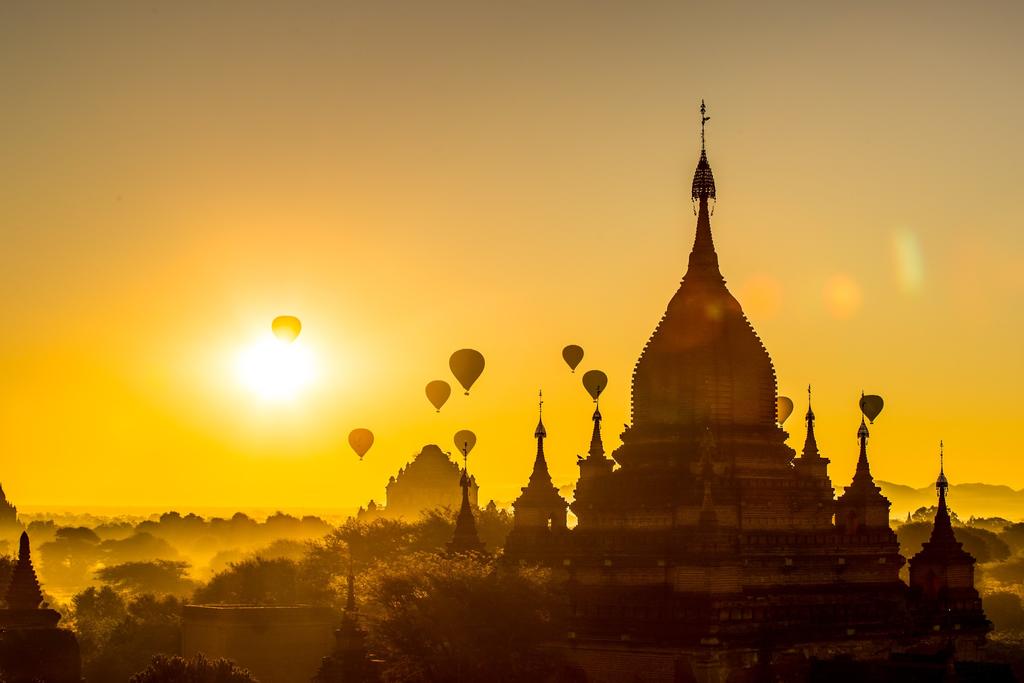
The hot air balloons in this early morning were the most beautiful show on the Bagan plains.
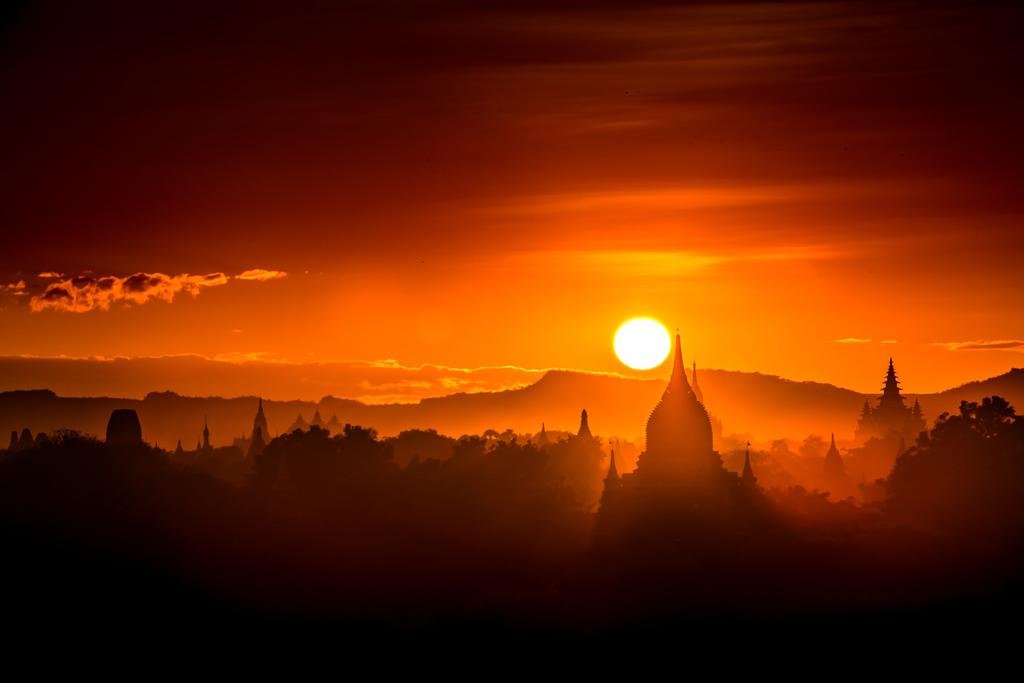
You have to climb a pagoda and wait to watch the sunset if you come to Bagan.

Pagodas, sitting in the crevice of time, witnessed the ups and downs of the land.
Little Samaneras in Frocks

The dim candlelight lit up their childish faces inside the thousand-year-old pagoda.

Their frocks swept off the dew and the fallen leaves on the ground in this misty morning.

The chanting echoed among pagodas in the afternoon sun.
There are little monks in frocks everywhere in Myanmar. Some older ones are like teens and younger ones are like five or six years old. Almost every Burmese has monk experience during their lifetime. Burmese children become monks during summer time while children in other countries work at summer jobs. It is up to each individual to decide how long they want to be a monk, it can be as short as one month, half year, or as long as several years and even a lifetime. You can also become a monk for several times. In general, it is a personal choice. You would be looked down by others if you didn’t have any monk experience as a man in Myanmar, and would not have social status and might not even qualify for marriage.
When a boy is five years old, his family will prepare him a ceremony to become a monk, which is extremely sacred for every family. In Myanmar, even though it is your choice to become a monk or live a secular life, you are bound to strict Buddhist rules if you chose to be a monk. Monks don’t receive no salary and temples don’t make profits, so all living expenses of a monk depend on donations.

Young monks walking among pagodas are like the elfs of this country. Their smile can melt away all worries.
Life on water, Inle Lake
Myanmar is indeed a magical place, there are so many sacred places not crowded with tourists. It took us approximately 40 minutes to fly from Bagan to Inle Lake. It is a lake on highland, the altitude is roughly 1,000 meters. I thought that I was already satisfied about my trip to Myanmar after the beautiful Bagan. Who knew, everything looked so charming when I set my feet on the small wooden boat. This place is called Inle Lake, where there are water hotels like in Maldives, water stilt houses like in Cambodia, a water city like Venice, and long neck women! Moreover, there are fishermen who row their boat with only one leg, in Myanmar only!
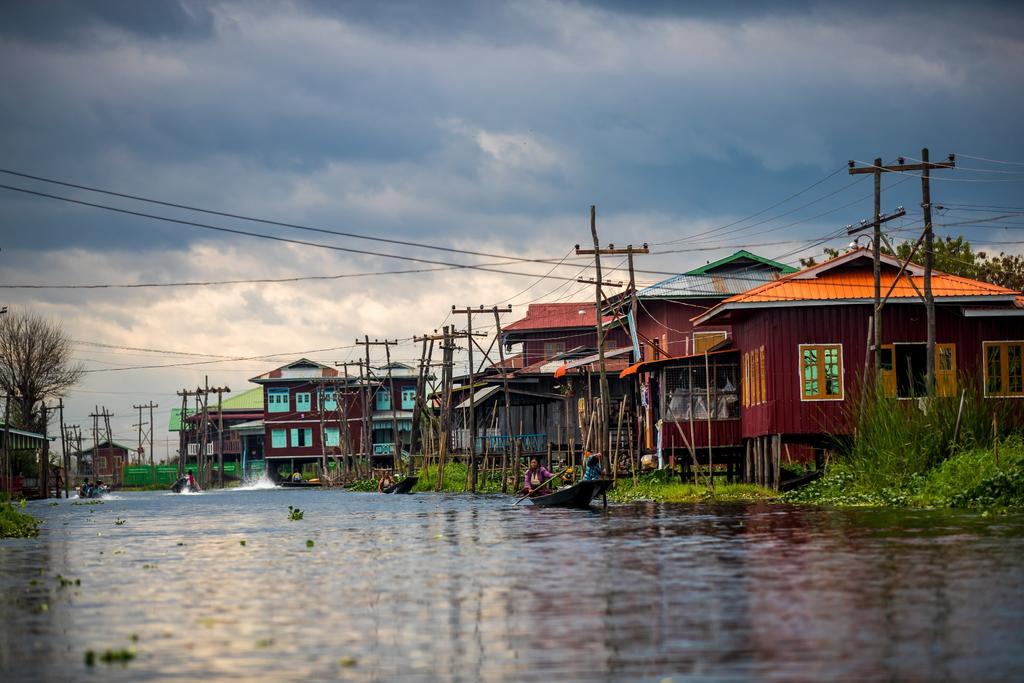
Boat is the only transportation means for the villages of Inle Lake.
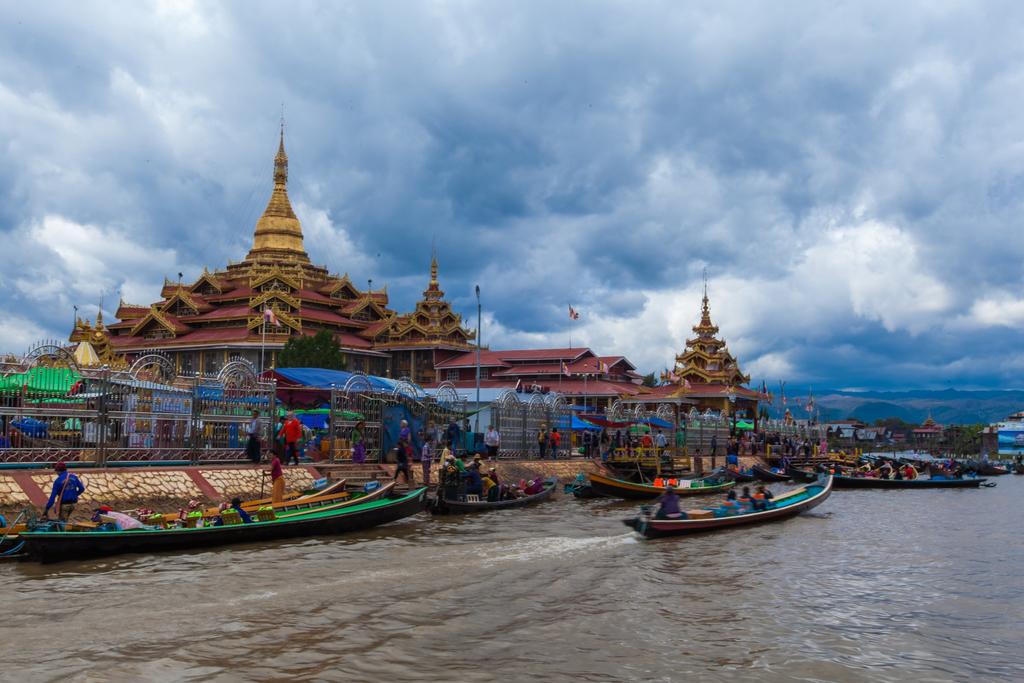
There is a temple at the place where three rivers merge. Many Buddhist followers and tourists come to visit.
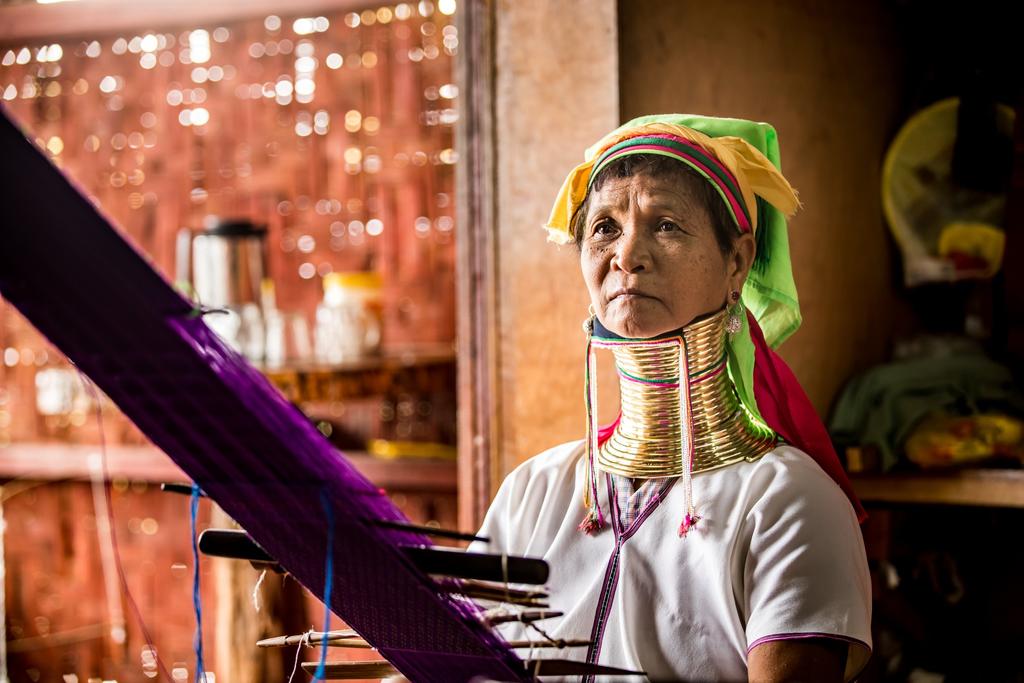
They are unique on earth, the long neck people. They judge the beauty of women by the height of their neck. The long tube must be kept until they die.

These fishermen are the most unique scenery on Inle Lake. They live in these wood cabins on the lake. They would show how to row a boat with only one leg whenever there are people taking photos of them.

They still keep the “one-leg rowing” tradition, a unique cultural heritage of Myanmar, even of the entire world.

Of course, there are also big houses on Inle Lake, just like the ones in Maldives!
Last but not the least, some thoughts
As we returned from Inle Lake to Mandalay,
it seems that I was already used to being barefoot
in this country of pagodas.
It turns out that it is not so difficult to put something down.
I’ve been to many Buddhist countries,
and it was only in Myanmar did I realize what belief truly was.
The muddy roads, ragged buildings and drifting dust,
behind those labels of poverty,
is the biggest wealth of Burmese people: kindness, contentment and simplicity.
This article contains 25 photos, has helped 14126 travellers to Myanmar




Those are indeed amazing shots! Myanmar is definitely on my list.
aww, thank you Suzie for the compliment!
WOW, these pictures are remarkably stunning!